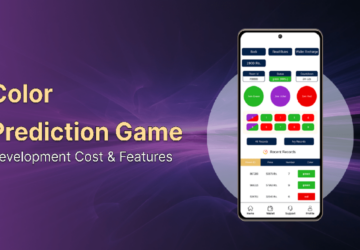In the ever-evolving digital landscape, applications have become the backbone of businesses, enabling seamless interactions between customers and companies. However, as applications become more complex and interconnected, ensuring their optimal performance and stability becomes a daunting task. You will learn in this article why monitoring your application is important.
The Significance of Application Monitoring
1. Ensuring Optimal Performance
Application monitoring allows businesses to track critical performance metrics and identify potential bottlenecks. By continuously monitoring response times and server health, organizations can proactively address performance issues before they escalate, providing users with a smooth and responsive experience.
2. Identifying and Resolving Issues
Monitoring applications in real-time help detect and diagnose issues promptly. By closely observing error rates and other key indicators, IT teams can also rapidly identify root causes. Additionally, this will help them initiate corrective actions, minimizing downtime and optimizing application performance.
3. Enhancing User Experience
Note that the user experience is a critical aspect of any application’s success. Monitoring user behavior and feedback can also provide valuable insights for optimizing the user interface, streamlining navigation, and meeting customer expectations.
Key Metrics to Monitor
1. Response Time
Response time is also a key indicator of an application’s efficiency. Note that monitoring response times across different processes and transactions helps identify slow-loading pages or functionalities, allowing for timely optimizations.
2. Error Rates
Note that tracking error rates is essential for identifying bugs and defects. By analyzing error logs, development teams can prioritize bug fixing and ensure a smoother user experience.
3. Server Health
Monitoring server health, including CPU usage, memory utilization, and disk space also helps anticipate potential server failures. Additionally, it ensures adequate resources are available to handle increasing loads.
4. Traffic and Usage Patterns
Note that understanding traffic and usage patterns is crucial for capacity planning and resource allocation. Application monitoring tools can also provide valuable data on peak usage times and popular features.
Tools for Application Monitoring
1. Application Performance Monitoring (APM) Tools
APM tools offer comprehensive insights into application performance, from user experience monitoring to code-level diagnostics. These tools also enable businesses to track response times, detect errors, and optimize application speed effectively.
2. Log Management Systems
Log management systems collect, analyze, and archive log data from various sources. Note that it helps teams identify and troubleshoot application issues through centralized log analysis.
3. Infrastructure Monitoring Solutions
Infrastructure monitoring tools focus on server health and resource utilization. Additionally, they provide IT teams with real-time data to ensure infrastructure stability.
Implementing a Monitoring Strategy
1. Defining Monitoring Objectives
Before diving into application monitoring, businesses must establish clear objectives and KPIs. Note that this ensures that monitoring efforts align with organizational goals and priorities.
2. Setting Up Alerts
Note that proactive monitoring requires setting up alerts for critical events and thresholds. Automated alerts also enable IT teams to respond swiftly to emerging issues, reducing downtime and mitigating potential damages.
3. Analyzing Data and Generating Reports
Note that the data collected through application monitoring is a treasure trove of insights. So regular analysis and generating detailed reports aid in understanding trends, patterns, and areas for improvement.
The Benefits of Real-Time Monitoring
1. Proactive Issue Resolution
Real-time monitoring also enables proactive issue resolution, helping businesses avoid costly outages and potential revenue losses.
2. Preventing Downtime
By addressing performance issues before they escalate, businesses can minimize downtime and maintain service continuity.
3. Scalability and Growth Insights
Note that application monitoring provides valuable data for planning and scaling resources according to business growth and changing demands.
Monitoring in Cloud Environments
1. Cloud-Specific Monitoring Challenges
Monitoring applications in the cloud can present unique challenges due to the distributed nature of cloud infrastructure.
2. Cloud Monitoring Best Practices
Implementing cloud-specific monitoring strategies, such as distributed tracing and resource tagging, can overcome these challenges and ensure comprehensive cloud application monitoring.
Security and Application Monitoring
1. Detecting Cyber Threats
Application monitoring can help detect unusual behavior patterns and potential security breaches. So they can safeguard sensitive data from cyber threats.
2. Safeguarding Sensitive Data
Note that monitoring data access and encryption status can prevent data breaches and maintain customer trust in the application’s security measures.
Application Monitoring for Mobile Apps
1. User Behavior Analysis
Monitoring user behavior in mobile apps can also lead to valuable insights for optimizing app functionality and user experience.
2. Crash Reporting and Bug Tracking
Monitoring crash reports and tracking bugs in mobile apps is also essential for delivering a stable and reliable user experience.
Incorporating Machine Learning in Monitoring
1. Predictive Analytics for Performance Improvement
Note that machine learning algorithms can analyze historical data and predict potential performance issues, enabling proactive improvements.
2. Anomaly Detection and Root Cause Analysis
Machine learning can also assist in identifying anomalies and uncovering the root causes of application issues. Therefore, it can help streamline the troubleshooting process.
The Cost-Effectiveness of Monitoring
1. Optimizing Resource Allocation
Note that investing in application monitoring allows businesses to optimize resource allocation and avoid unnecessary expenses.
2. Calculating ROI
Measuring the return on investment for application monitoring tools also helps justify their adoption and assess their impact on the organization.
Application Monitoring for Business Growth
1. Enhancing Customer Satisfaction
Note that improving application performance and user experience fosters greater customer satisfaction and loyalty.
2. Gaining a Competitive Edge
Effective application monitoring can also give businesses a competitive advantage by delivering superior services.
Challenges and Pitfalls of Application Monitoring
1. Data Overload
Note that monitoring generates vast amounts of data. So it is crucial to establish data filtering and analysis mechanisms to avoid information overload.
2. False Alerts and Noise
Tuning monitoring systems to reduce false alerts is essential to prevent alert fatigue. It also ensures genuine issues receive prompt attention.
3. Monitoring Strategy Alignment
Aligning application monitoring with business goals is vital to focus on relevant metrics and insights.
Future Trends in Application Monitoring
1. Advanced AI-Driven Monitoring Solutions
AI-powered monitoring tools are expected to revolutionize application monitoring by providing more accurate predictions and efficient issue resolution.
2. Hybrid Monitoring Approaches
Combining on-premises and cloud-based monitoring approaches will become more prevalent as businesses adopt hybrid infrastructure models.
Summary
The significance of monitoring your application cannot be overstated in today’s rapidly evolving technological landscape. As businesses and individuals increasingly rely on software applications to streamline operations and deliver exceptional user experiences, the need for efficient monitoring becomes paramount.
Monitoring your application offers numerous benefits, from identifying and resolving potential issues before they escalate into major problems to optimizing performance and enhancing user satisfaction. By proactively monitoring key metrics and performance indicators, businesses can also gain valuable insights into their application’s health and usage patterns, enabling them to make informed decisions for improvement.
Moreover, application monitoring plays a crucial role in ensuring data security and compliance. Detecting and mitigating potential security breaches promptly can also save businesses from reputational damage and financial losses. It also helps organizations adhere to regulatory requirements and industry standards, instilling trust among customers and partners.
The continuous monitoring of an application is a dynamic process that requires adaptability and evolution over time. As applications evolve with updates and new features, monitoring strategies must evolve too, to stay relevant and effective. Embracing modern monitoring tools and methodologies allows businesses to stay ahead of the curve, enabling them to provide uninterrupted and top-notch user experiences.
Conclusion: Why Monitoring Your Application is Important
Ultimately, investing in robust application monitoring solutions is an investment in the success and longevity of your business. It not only ensures the seamless functioning of your application but also positions your organization to be agile and responsive to changing market demands. As technology continues to advance and user expectations rise, monitoring your application becomes a necessity rather than a luxury. So, take charge of your application’s health, embrace monitoring, and secure a brighter future for your business.
Application monitoring is a crucial practice for any organization seeking to provide a seamless user experience and maintain optimal application performance. By embracing advanced monitoring tools, businesses can proactively address issues, optimize resources, and stay ahead of the competition in this fast-paced digital landscape.
FAQs: Why Monitoring Your Application is Important
Q: What is application monitoring?
Application monitoring is the process of tracking and analyzing an application’s performance and behavior to ensure its optimal functioning and identify and resolve potential issues promptly.
Q: Why Monitoring Your Application is Important?
Real-time monitoring enables businesses to detect and resolve issues as they happen, preventing downtime and ensuring a smooth user experience.
Q: How can application monitoring benefit businesses?
Application monitoring can enhance customer satisfaction, optimize resource allocation, and provide valuable insights for business growth and strategic decision-making.
Q: What are some challenges in application monitoring?
Challenges include data overload, false alerts, and aligning the monitoring strategy with business objectives.
Q: What are the future trends in application monitoring?
Advanced AI-driven monitoring solutions and hybrid monitoring approaches are emerging as the future trends in application monitoring.








